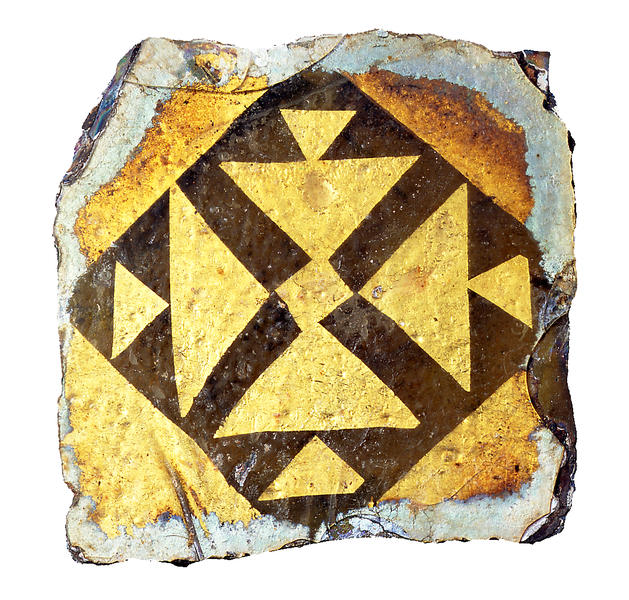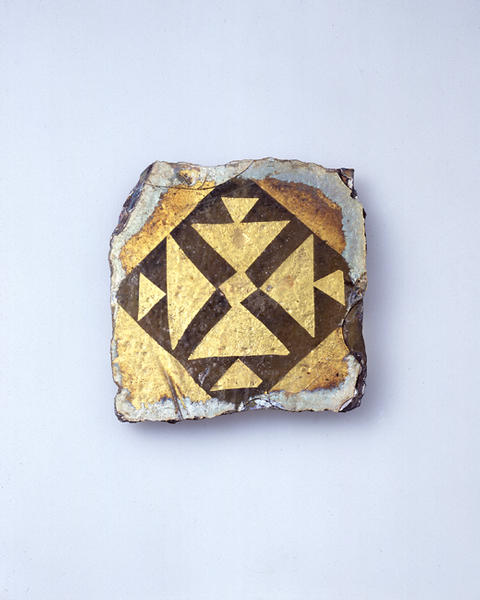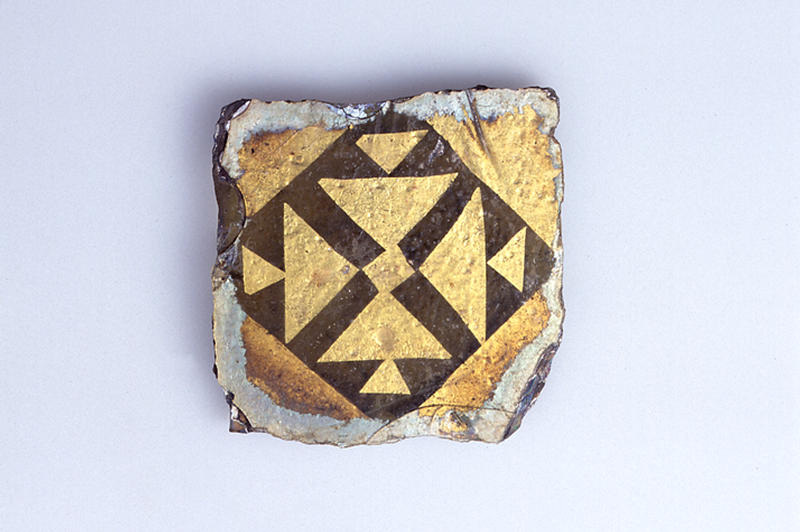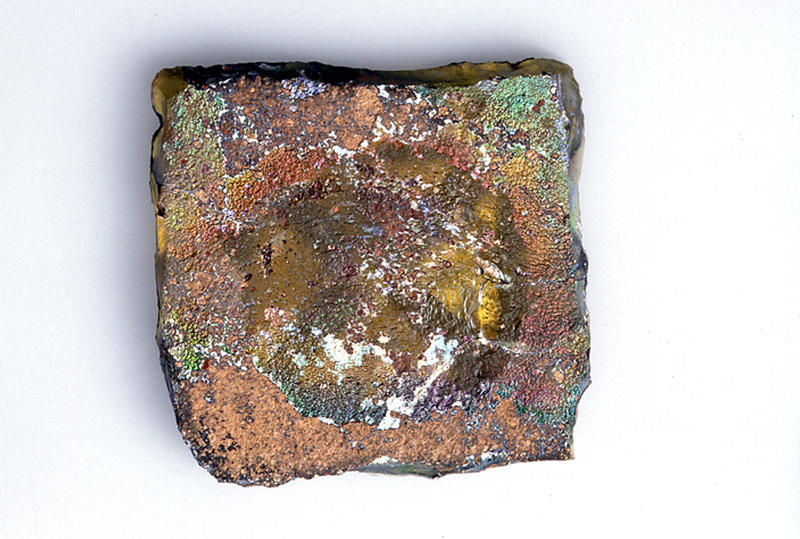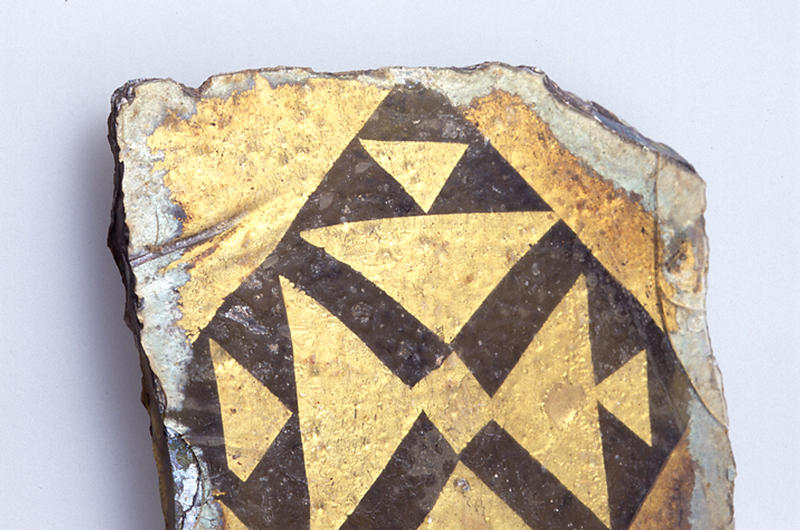幾何学文ゴールドサンドイッチタイル
- ビザンチン
- 9世紀
- ガラス、金
- H-8.8 W-9
茶色がかった半透明ガラス2枚の間に、三角形に切断した金箔を挟み、溶着したタイルである。ガラスの表面には、布か何かを押し付けたような、細かい規則的な文様が見られる。金箔の上に気泡がいくつか入り込んでおり、周辺から銀化が中に入り込みつつある。裏にはガラスの上に赤い土のようなものが付いている。シリア北部のアレッポ(現ハラブ)近郊から発掘されたとの報告があり、教会建築の装飾に利用された可能性も高い。
Catalogue Entry
Triangular shaped flakes of gold were sandwiched between two layers of brownish semi-translucent glass, and then fired to form a tile. The surface of the glass shows a detailed, regular pattern that appears to have been transferred to the surface by having had a cloth or other material pressed into it. Numerous bubbles were captured in the glass above the gold flakes and the iridescence has worked its way into the glass from the surrounding edge. A reddish earth-like material has adhered to the back surface of the glass. This work is said to have been excavated at the area near Aleppo in Syria, and there is a possibility that this tile would have been used as architectural decoration.
作品解説(エジプトのイスラーム文様)
金箔装飾タイル
シリア 9-12世紀
ガラス、金
8.8×9.0cm
MIHO MUSEUM
厚い褐色のガラスの上に金箔を載せ、その上に薄い透明無色のガラスを被せて、金箔がガラスにサンドイッチ状に挟まれていることから、ゴールド・サンドイッチ・ガラスとも言われる。シリア北部の教会で発見されたと伝えられ、世界各地に類品が散っている。8ミリほどの褐色のガラスの上に、三角または四角に切った金箔を載せ、1ミリ以下のガラスで覆っている。裏面には、赤褐色の土のようなものが付着しており、2枚のガラス間に、周囲からガラスの銀化が進行している。
Catalogue Entry
Tile with Gold-sandwich Decoration
Syria, 9th-12th centuries
Glass, gold
8.8×9.0cm
Miho Museum, Shiga
Gold leaf has been laid on the top of thick brown glass, and a thin transparent colorless glass has been applied to the top, sandwiching the gold between the glass layers. This type of glass is alternately known as gold sandwich glass. These tiles are said to have been discovered in a church in northern Syria. Similar examples are scattered amongst collections throughout the world. Triangular and square pieces of gold foil were placed on top of an approximately 8 millimeter thick piece of brown glass and then covered with a less than one millimeter thick piece of glass. The back surface has a reddish brown clay-like adhesion, and the iridescence from surrounding glass has spread to the area between the two layers of glass.
